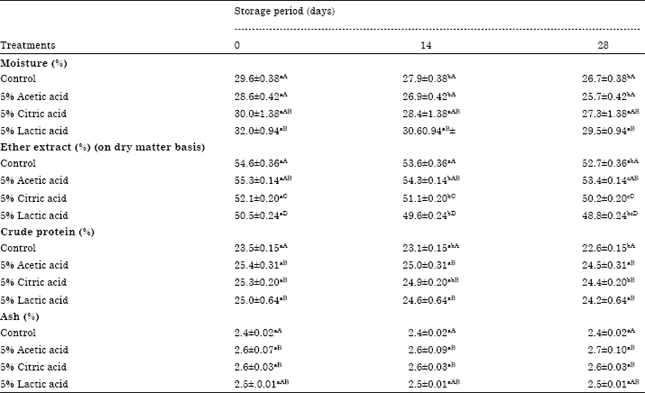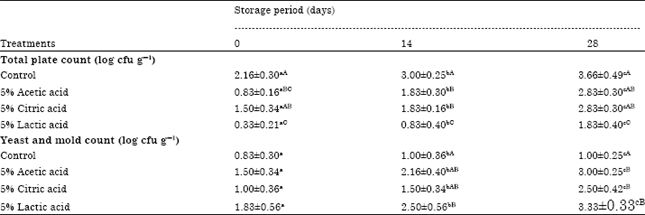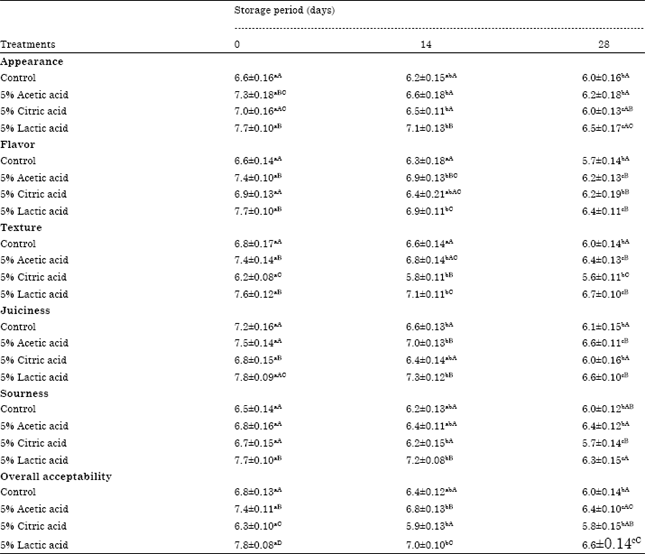Research Article
Effect of Ambient Storage on the Quality Characteristics of Kaladhi: An Acid Coagulated Milk Product
Sher-e-Kashmir, University of Agricultural Sciences and Technology of Jammu, Division of Livestock Products Technology, Faculty of Veterinary Sciences and Animal Husbandry, R.S. Pura, 181-102, India
LiveDNA: 1.1013
V. Pathak
Sher-e-Kashmir, University of Agricultural Sciences and Technology of Jammu, Division of Livestock Products Technology, Faculty of Veterinary Sciences and Animal Husbandry, R.S. Pura, 181-102, India
Z.F. Bhat
Sher-e-Kashmir, University of Agricultural Sciences and Technology of Jammu, Division of Livestock Products Technology, Faculty of Veterinary Sciences and Animal Husbandry, R.S. Pura, 181-102, India
S.R. Ahmad
Sher-e-Kashmir, University of Agricultural Sciences and Technology of Jammu, Division of Livestock Products Technology, Faculty of Veterinary Sciences and Animal Husbandry, R.S. Pura, 181-102, India












